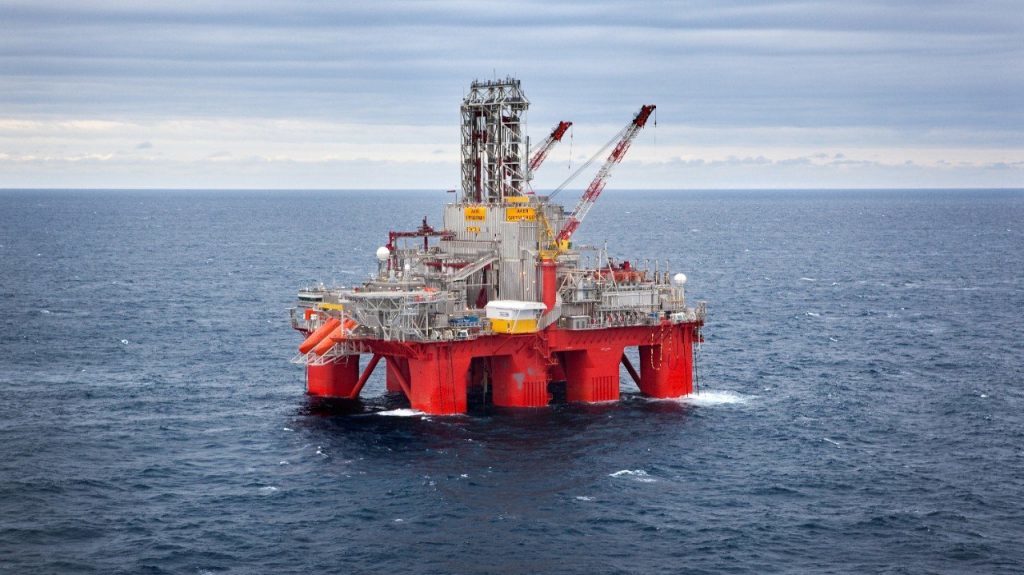
The struggling North Sea has been given a long awaited “signal of confidence” needed to bring back investment following the oil and gas downturn.
The industry was left reeling following the crude price plunge that started in 2014 and continues to hamper spending in the sector.
Trade body Oil and Gas UK warned in its latest economic report, published last month, that fresh capital investment was needed “urgently” in order to squeeze every last drop out of the North Sea.
Capital expenditure on the UK continental shelf was £8.3bilion in 2016, down from a high of £15billion in 2014.
But a raft of new developments coming onstream this year, coupled with Statoil’s latest multi-million barrel North Sea oil announced yesterday, could be the confidence boost needed to bring back investors, according to industry leaders.
The Verbier prospect is the result of five years of hard work in the UK North Sea for the state run oil firm.
The Norwegian operator announced yesterday it had discovered up to 25 million barrels of reserves after drilling a sidetrack on the well in the outer Moray Firth.
Analysis of the data is still to be carried out but the reservoir has the potential for up to 130 million barrels, the firm claims.
Deirdre Michie, chief executive of Oil & Gas UK, said: “This is good news from Statoil and partners and we now really hope that the find proves to be commercially appealing and proceeds to development.
“It’s also another signal of confidence in the future of the UK Continental Shelf and the kind of development that should further persuade investors of the benefit of putting their money into this basin which still holds billions of barrels of oil and gas.”
North Sea regulator, the Oil and Gas Authority also welcomed Statoil’s announcement yesterday.
An OGA spokesperson said: “This successful appraisal is great news for the North Sea and demonstrates once again there is considerable exploration potential remaining on the UK Continental Shelf, with a number of plays and prospects yet to be exploited.”
Scottish Energy Minister Paul Wheelhouse welcomed the announcement, which he said “highlights the significant potential for oil and gas which still exists under Scotland’s waters”.
He said: “With the right fiscal and regulatory environment, Scotland’s offshore oil and gas industry has a bright future, with up to 20 billion barrels of oil equivalent remaining under the North Sea and in the wider basin.
“Our Programme for Government reinforces the Scottish Government’s commitment to the sector, clearly stating that harnessing the resources of the North Sea will be vital to the Scottish economy for decades to come.
“Within that context, we will continue to push the UK Government to bring forward measures to increase exploration activity and attract fresh investment.”
Scottish Conservative energy spokesman Alexander Burnett said the discovery was another important boost for the local and national economy, adding that it proved there was “still plenty of life left in the UK Continental Shelf”.
Professor Paul de Leeuw, director RGU’s Oil and Gas Institute said: “Statoil’s Verbier discovery is yet another welcome confidence boost for the UKCS.
“No doubt more work is required to fully appraise the discovery, but it demonstrates that there is still a significant prize to go after and that the UK remains an attractive basin for exploration and appraisal activity.”
Statoil operates and owns 70% of the Verbier licence.
Project partner Jersey Oil and Gas has an 18% stake, with CIECO taking up the remaining 12%.
Jenny Morris, Statoil’s vice president for exploration in the UK, is cautiously optimistic about Verbier.
She said: “We re-positioned on the UK continental shelf about five years ago so this result, first and foremost, is very welcome given all the hard work we have put in over the last five years.
“We think we have proven about 25 million barrels of recoverable from the well-bore location.
“It could be up to 130 [million] when we look at the data. There is uncertainty in that range and I think we’ve been quite honest about that.
“We will need to do some more work to refine that range but clearly the discovery, especially in an area as mature as the outer Moray Firth, is very positive indeed.
“We will obviously come together as a joint venture partnership and discuss the way forward.”
Recommended for you
